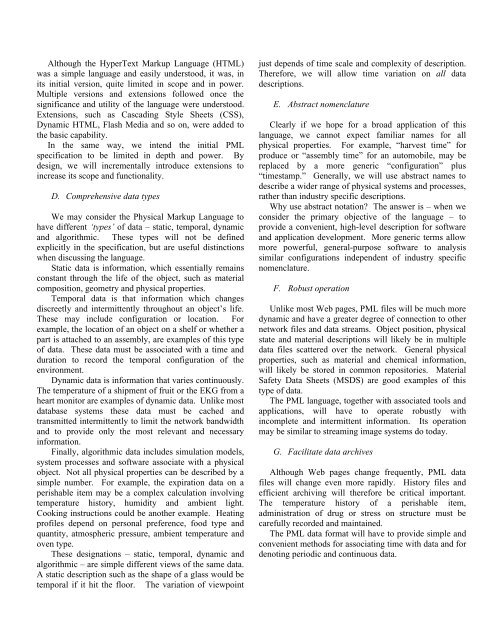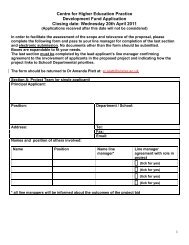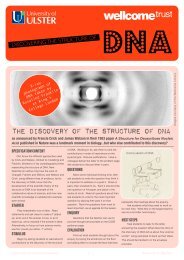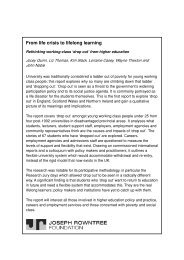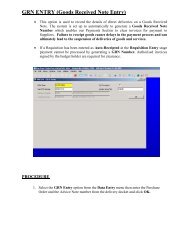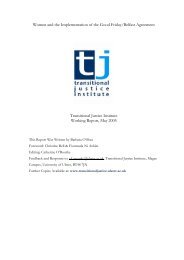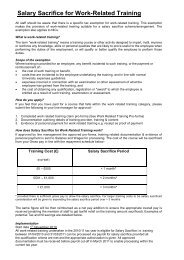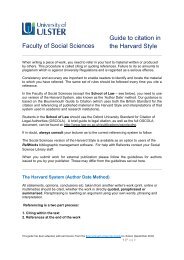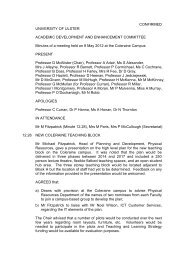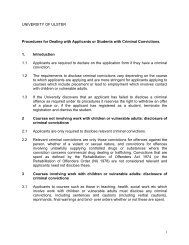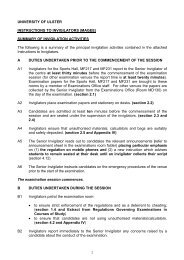The Physical Markup Language - Auto-ID Labs
The Physical Markup Language - Auto-ID Labs
The Physical Markup Language - Auto-ID Labs
Create successful ePaper yourself
Turn your PDF publications into a flip-book with our unique Google optimized e-Paper software.
Although the HyperText <strong>Markup</strong> <strong>Language</strong> (HTML)<br />
was a simple language and easily understood, it was, in<br />
its initial version, quite limited in scope and in power.<br />
Multiple versions and extensions followed once the<br />
significance and utility of the language were understood.<br />
Extensions, such as Cascading Style Sheets (CSS),<br />
Dynamic HTML, Flash Media and so on, were added to<br />
the basic capability.<br />
In the same way, we intend the initial PML<br />
specification to be limited in depth and power. By<br />
design, we will incrementally introduce extensions to<br />
increase its scope and functionality.<br />
D. Comprehensive data types<br />
We may consider the <strong>Physical</strong> <strong>Markup</strong> <strong>Language</strong> to<br />
have different ‘types’ of data – static, temporal, dynamic<br />
and algorithmic. <strong>The</strong>se types will not be defined<br />
explicitly in the specification, but are useful distinctions<br />
when discussing the language.<br />
Static data is information, which essentially remains<br />
constant through the life of the object, such as material<br />
composition, geometry and physical properties.<br />
Temporal data is that information which changes<br />
discreetly and intermittently throughout an object’s life.<br />
<strong>The</strong>se may include configuration or location. For<br />
example, the location of an object on a shelf or whether a<br />
part is attached to an assembly, are examples of this type<br />
of data. <strong>The</strong>se data must be associated with a time and<br />
duration to record the temporal configuration of the<br />
environment.<br />
Dynamic data is information that varies continuously.<br />
<strong>The</strong> temperature of a shipment of fruit or the EKG from a<br />
heart monitor are examples of dynamic data. Unlike most<br />
database systems these data must be cached and<br />
transmitted intermittently to limit the network bandwidth<br />
and to provide only the most relevant and necessary<br />
information.<br />
Finally, algorithmic data includes simulation models,<br />
system processes and software associate with a physical<br />
object. Not all physical properties can be described by a<br />
simple number. For example, the expiration data on a<br />
perishable item may be a complex calculation involving<br />
temperature history, humidity and ambient light.<br />
Cooking instructions could be another example. Heating<br />
profiles depend on personal preference, food type and<br />
quantity, atmospheric pressure, ambient temperature and<br />
oven type.<br />
<strong>The</strong>se designations – static, temporal, dynamic and<br />
algorithmic – are simple different views of the same data.<br />
A static description such as the shape of a glass would be<br />
temporal if it hit the floor. <strong>The</strong> variation of viewpoint<br />
just depends of time scale and complexity of description.<br />
<strong>The</strong>refore, we will allow time variation on all data<br />
descriptions.<br />
E. Abstract nomenclature<br />
Clearly if we hope for a broad application of this<br />
language, we cannot expect familiar names for all<br />
physical properties. For example, “harvest time” for<br />
produce or “assembly time” for an automobile, may be<br />
replaced by a more generic “configuration” plus<br />
“timestamp.” Generally, we will use abstract names to<br />
describe a wider range of physical systems and processes,<br />
rather than industry specific descriptions.<br />
Why use abstract notation? <strong>The</strong> answer is – when we<br />
consider the primary objective of the language – to<br />
provide a convenient, high-level description for software<br />
and application development. More generic terms allow<br />
more powerful, general-purpose software to analysis<br />
similar configurations independent of industry specific<br />
nomenclature.<br />
F. Robust operation<br />
Unlike most Web pages, PML files will be much more<br />
dynamic and have a greater degree of connection to other<br />
network files and data streams. Object position, physical<br />
state and material descriptions will likely be in multiple<br />
data files scattered over the network. General physical<br />
properties, such as material and chemical information,<br />
will likely be stored in common repositories. Material<br />
Safety Data Sheets (MSDS) are good examples of this<br />
type of data.<br />
<strong>The</strong> PML language, together with associated tools and<br />
applications, will have to operate robustly with<br />
incomplete and intermittent information. Its operation<br />
may be similar to streaming image systems do today.<br />
G. Facilitate data archives<br />
Although Web pages change frequently, PML data<br />
files will change even more rapidly. History files and<br />
efficient archiving will therefore be critical important.<br />
<strong>The</strong> temperature history of a perishable item,<br />
administration of drug or stress on structure must be<br />
carefully recorded and maintained.<br />
<strong>The</strong> PML data format will have to provide simple and<br />
convenient methods for associating time with data and for<br />
denoting periodic and continuous data.


